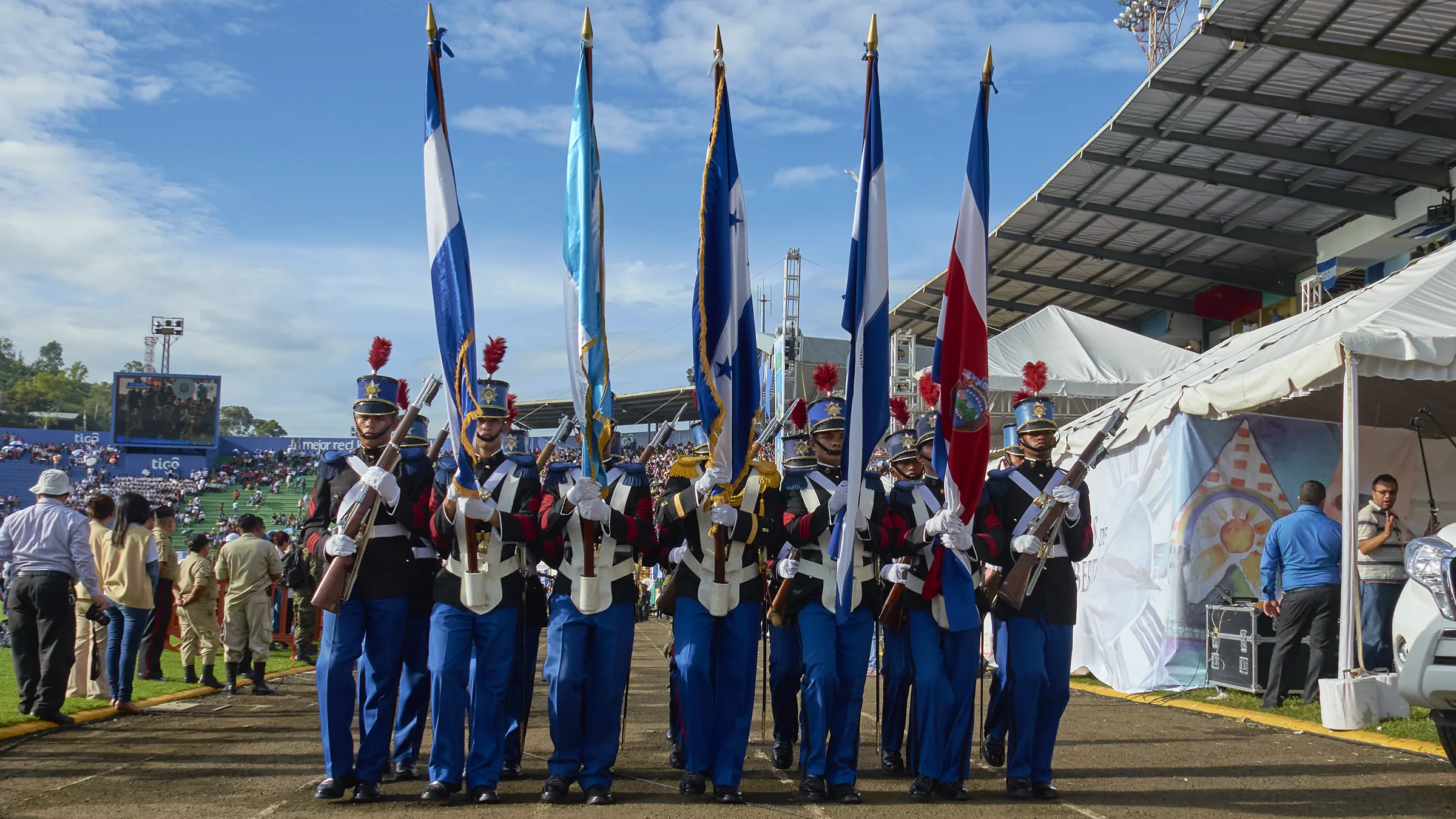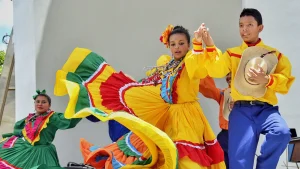Protocol and Use of the National Flag of Honduras
The National Flag of Honduras as one of the most representative and important symbols of the country carries a protocol for its use in civic and official events. Learn how to honor the National Pavilion.

Here are the most important ones:
Places of honor corresponding to the Flag
The National Flag has its place of honor where it remains during civic events that take place in homage to the country or its children. These sites are:
- The upper end of the mast, placed vertically, in a preferred place in public squares, in the protruding part of national buildings, institutes and schools, Embassies and Consulates in foreign countries and in the upper part of the mast of ships.
- The army corps, in campaign activities, place the flag in the most prominent place: the top of a hill or the top of a tree, always in a place close to the one where the respective chiefs spend the night.
- In military, school or civic parades, the flag placed on the upper end of a portable pole is used. The Flag guides the parade, led by the most honorable person or by the first authority of the place.
- The person who carries the flag is called Abanderado, and whenever he leads it, he must do so with a martial step and with an inclination of 15 degrees towards the front, starting from the vertical. Military or distinguished persons, or students who deserve the honor of being guardians of one of the sacred national symbols, will accompany the flag on the flanks and in the rear.
- When the flag takes part in a parade or civic walk, the step of the standard-bearer and those who accompany him is martial and measured, with the gaze raised and directed towards the front.
- In the penultimate point of the program, the President or Director will ask the audience to stand up and will order the standard bearer, followed by his escort, to remove the Flag from the room, paying those present the honors of the case.
Raise the flag
- The flag is raised at 6:00 in the morning or rigorously herded at 6:00 in the afternoon.
- In both acts should be present if possible, a column of the National Army with its clarion of orders, the body of the Musical Band to execute the National Anthem or the martial music agreed by the competent authorities.
- In the case of Education centers, a column of Students must do the statutory honors, without distinction of sex. Also, if possible, the 21 ordinance salvoes will be fired.
- The flag unfolds only when it is hoisted, being careful not to touch the ground while securing the string and extending to raise it.
- The Flag rises solemnly and slowly, to the place that corresponds to it on the pole, as ordered by the voice of the clarion, the chords of the National Anthem or the martial music destined for said ceremony.
- With the flag in place, the string is secured so that the breeze does not loosen the canvas when it flaps.
- When the flag is hoisted at half mast, it is led first to the upper end, then it is lowered to the place where it will remain for a prescribed time.
The Arrío de la Bandera
- The flag was raised at 6:00 in the afternoon, lowering it with the same solemnity and honors that it was raised: with the greeting of the clarion voice, the notes of the hymn or martial music, etc.
- When the flag is lowered at half mast, before descending, it is led to the upper end of the mast, then lowers with the solemnity of ordinance.
- It must be avoided that, while the Flag descends and is separated from the string to be stored, it touches the ground or rests on an object.
Save the Flag
The Flag is saved immediately as it comes down from the mast. To save it, do the following:
- Fold it lengthwise in two parts.
- Always fold it lengthwise in two parts.
- Start at one end by folding it in such a way that it forms a triangle.
- The place destined to keep the Flag must remain clean and protected against dust and moths.
The Flag in the company of other Flags
- When the National Flag is paraded in the company of another Foreign Flag, or of religious societies or congregations, it must always go to the right of its companion.
- If you parade along with other flags, you must lead the march placed in front of and in the center of them.
- When it has to remain hoisted in the company of other flags, it will occupy the center of them on the highest mast. The accompanying flags will be placed at the same distance and symmetrically from each other.
- When the Flag is placed hanging from a wall in the place of honor together with other flags, it will always be placed to the right of its companions.
- In a stage, auditorium, etc., the Flag must be placed in a prominent place and to the right of the position of honor of the person who presides over the meeting.
- It is an act of disrespect to suspend the Flag by nailing it anywhere.
- Heraldry prohibits the placing of two crossed flags.
Handling Deteriorated Flags
- Old or deteriorated flags should not be used in civic events, nor should they be given any other use to which they will already perform.
- When the Flag, due to its extreme use, does not render any more service, it must be kept in a safe place or incinerated to avoid being desecrated.
- Every citizen who boasts of worship must never disrespect the symbols of his country. This respect for one’s own extends to the symbols of other countries.
Uses of the Flag
- The Flag, as a National Symbol, is made to be present in all the civic festivals that the Nation celebrates for joy, to commemorate important dates in its history, for the heroic deeds of its children or for the events that put it in pain. deep.
- The National Flag should not be used to cover a statue, or a portrait to be unveiled. It is used only as a background.
- When the Flag is present in the Tribune, it must be behind and above the speaker. If there is a portable pole, it will occupy the right of the position of honor.
- When the colors of your Flag are used to decorate places where civic festivals are celebrated, they will be placed in the corresponding order: Blue, white and blue, either their vertical or horizontal position.
Penalties for misuse of the Flag
Although the Honduran Penal Code does not provide specific sanctions for misuse or abuse of the national flag, it does so in a general way for all national symbols, including the National Flag. Here is the article on this topic:
Article 315. Anyone who violates any of the national symbols will be sanctioned with imprisonment for two (2) to four (4) years, a fine of fifty thousand (L.50,000.00) to one hundred thousand Lempiras (L.100,000.00) and special disqualification for double the length of time the confinement lasts.
